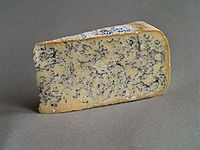
Influence of aging time, temperature and relative humidity on the sensory quality of dry-aged Belgian Blue beef.
Sign Up to like & getrecommendations! Published in 2021 at "Meat science"
DOI: 10.1016/j.meatsci.2021.108659
Abstract: The objective of this study was to evaluate the effect of aging period (0, 3, 6 or 9 weeks), aging temperature (2 versus 6 °C at 75% relative humidity, experiment 1) and relative humidity (70 versus 90%… read more here.
Keywords: weeks aging; temperature; relative humidity; blue beef ... See more keywords

Influence of seasonal differences on semen quality and subsequent embryo development of Belgian Blue bulls
Sign Up to like & getrecommendations! Published in 2020 at "Theriogenology"
DOI: 10.1016/j.theriogenology.2020.08.037
Abstract: Belgian Blue bulls are more susceptible to high temperature and humidity index (THI) than most other cattle breeds. Here, we investigated whether high ambient temperature during summer affected semen quality and subsequent embryo development in… read more here.
Keywords: blue bulls; subsequent embryo; thi; embryo development ... See more keywords

Alopecia in Belgian Blue crossbred calves: a case series
Sign Up to like & getrecommendations! Published in 2019 at "BMC Veterinary Research"
DOI: 10.1186/s12917-019-2140-1
Abstract: BackgroundAlopecia is defined as the partial or complete absence of hair from areas of the body where it normally grows. Alopecia secondary to an infectious disease or parasitic infestation is commonly seen in cattle. It… read more here.
Keywords: alopecia; case; blue crossbred; crossbred calves ... See more keywords

Exploring the microbial composition of Holstein Friesian and Belgian Blue colostrum in relation to the transfer of passive immunity.
Sign Up to like & getrecommendations! Published in 2022 at "Journal of dairy science"
DOI: 10.3168/jds.2022-21799
Abstract: For centuries, multicellular organisms have lived in symbiosis with microorganisms. The interaction with microorganisms has been shown to be very beneficial for humans and animals. During a natural birth, the initial inoculation with bacteria occurs… read more here.
Keywords: colostrum; composition; holstein friesian; friesian belgian ... See more keywords